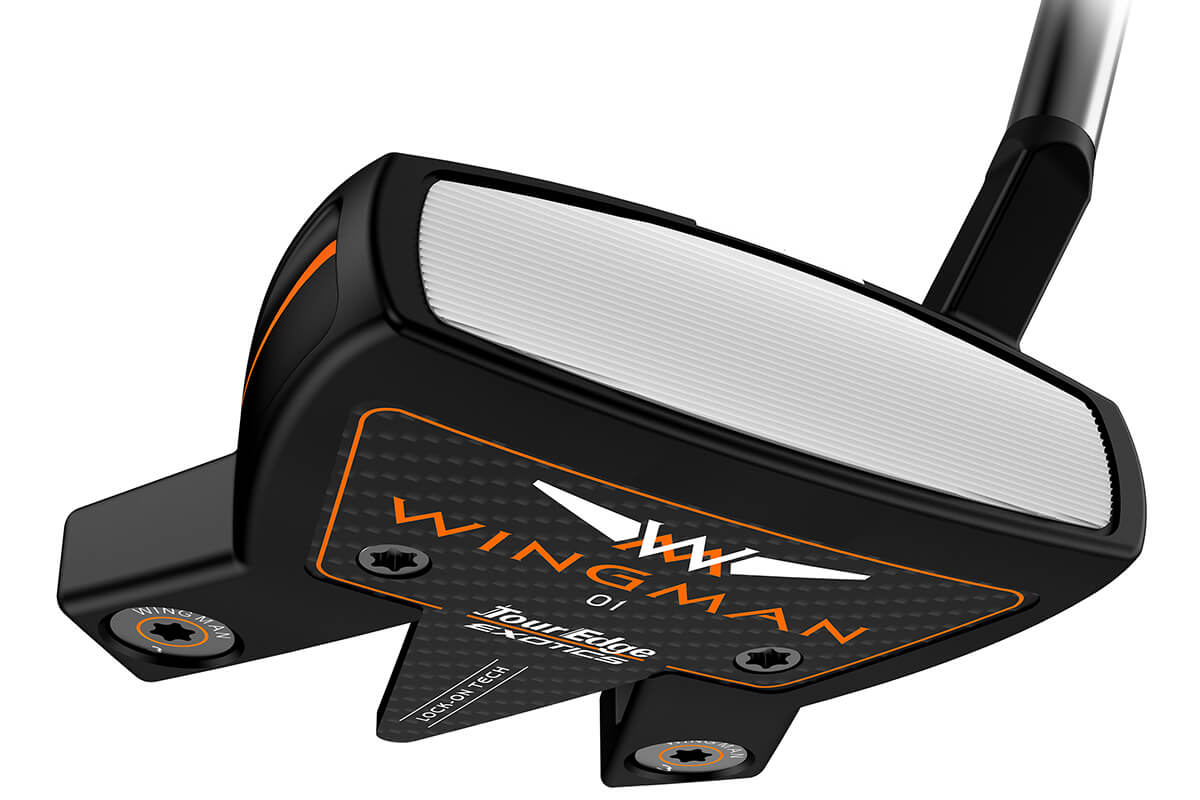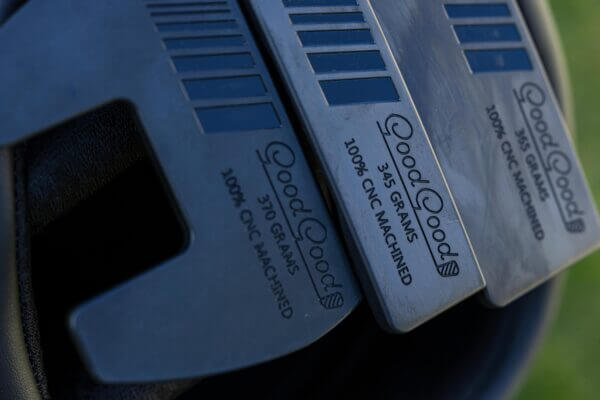I know we’re in the midst of #ReleaseSZN so keeping everything straight might require several Excel documents or a desk papered over with Post-it Notes. Whatever your process, here are two more to add to the list.
Rounding out the Tour EXS line for 2020 is an updated Tour Edge EXS Ti-Utility iron and multi-material Wingman putter.
EXS Ti-Utility
The previous CBX Iron-Wood ranked as the #1 most-played utility iron on the 2019 PGA Tour Champions eight separate times in 2019. Following suit, the new EXS Ti-Utility is born of the same architecture but features a more compact footprint and new beta-rich titanium face. Before this, Tour Edge used a 980-HT hypersteel face material.
The EXS Ti-Utility incorporates L-face construction by combo-brazing a hollow 431 stainless-steel body to the titanium face. Specifically, the L-face structure wraps the face around the leading edge creating a hinge effect which Tour Edge believes produces better performance across the entire face and particularly on shots struck low on the face.
Though more expensive, the new beta-rich titanium face is significantly lighter than steel. Combo-brazing frees up additional discretionary weight which engineers use to push the CG lower and more rearward in the club head. Additionally, the harvested weight allowed club designers to remove material from the sole and back of the club, creating a smaller overall profile that’s often preferred by better players, including touring professionals.
GAINS
The EXS Ti-Utility boasts an MOI measurement that is approximately 12% higher than the CBX Iron-Wood. Also, because the beta-rich titanium face is thinner and more ductile, Tour Edge’s states the EXS Ti-Utility produces 2 MPH more ball speed, 1° higher launch, and spin rates equal to the CBX Iron-Wood.
It’s simple math, but more ball speed with higher launch and similar spin rates should yield a bit more distance. Tour Edge believes the beveled leading edge and narrowed profile will appeal to better players who can benefit from the boost in distance but also want iron-like playability.
In terms of custom options, a hosel notch allows for loft/lie adjustments of +/- 3° and all lofts will be available in two finishes – chrome silver and black pearl.
The retail price is $199 and the EXS Ti-Utility is available in #2/17°, #3/19°, #4/22° and #5/25° lofts.
Retail availability starts April 1.
SPEEDTESTED SHAFTS
As with the entire EXS 220 line, Tour Edge relied heavily on T.E.D. (Tour Edge Design testing robot) to help determine optimal shaft pairings. We’ve stated this before but there’s no single shaft which is the absolute best fit for every golfer. That said, there is a shaft that best fits each individual. Breaking players down into different groups based on swing speed is certainly a step in the right direction and should help players find a shaft with a good chance of producing solid performance.
EXS 220 Ti-Utility SpeedTested Stock Shafts
< 85 MPH KBS TGI Tour Graphite: 50g Ladies | 60g A-Flex
85-95 MPH Mistubishi Tensei Silver Hybrid: 65g Regular | 70g Stiff
Project X HZRDUS Smoke Black: 5.5 Regular
>95 MPH Mistubishi Tensei Silver Hybrid: 75g X-Stiff
Project X HZRDUS Smoke Black: 6.0 Stiff | 6.5 X-Stiff
Wingman Putter
Okay, let’s get it out of your system right now. Yes, the Tour Edge Wingman putter looks remarkably like the TaylorMade Spider, Callaway Black Ten, PXG Operator, etc. etc. etc. Though to be fair, the one design that typically gets left out should probably be the first-mentioned – Frank Thomas’ Frankly Frog circa 2005. The point is, nearly every equipment design looks similar to something else.
The Winged mallet (my term) is now a commonplace template in the industry and like other popular designs, there’s a good reason why this is the case. It works.
Consider the challenge a company faces in bringing a new putter to market. To be successful, the brand needs to strike the tenuous balance of offering something new and different while generating designs consumers expect to see. It’s a reality critics often fail to recognize when spouting off such insightful criticisms such as “Man, that’s sooooo original” or “Like that’s the best they could come up with..pshaw?!”
After all, having a bar menu with exotic flavors of Mac ‘n Cheese is all well and good, but never at the expense of a solid burger and fries.
DETAILS
As the template indicates, Wingman is a high-MOI (Tour Edge puts the number just above 5000 gm/cm2) design weighing 355 grams with the stock 3-gram weights. Additional weights (8 gm and 15 gm) are available which can bring the head weight up to 379 grams.
Tour Edge asserts that a Surlyn face insert produces an optimal sound/feel at impact. Horizontal MicroGrooves are used to reduce initial skidding off the face, promoting earlier “forward roll.” That said, putters tend to be a category of equipment where soft doesn’t always connote best. Our testing shows the benefits of different face technologies, but the feel of a putter tends to be more subjective.
It should be noted, while faster initial roll is a common benefit lauded by OEMs, there isn’t much evidence supporting the hypothesis that “earlier forward roll” results in more made putts. That said, most grooved inserts help encourage consistent distance control, though it’s unclear if the Tour Edge MicroGrooves are designed explicitly around that same objective.
At address, a Lock-On visual alignment indicator lets the golfer know when the putter is properly aligned and a jumbo Lambkin Sink Fit Straight grip helps with proper hand positioning. The stock shaft is the KBS CT Tour putter shaft with a black PVD finish. The putter-specific shaft features a stiffer overall profile as well as a stiffer tip section. Though not exactly the same, the KBS CT concept is similar to other putter shaft designs – most notably Callaway’s Stroke Lab and BGT Stability Shaft. Specific technical details notwithstanding, the point is the traditional steel putter shaft will likely be in golf’s rearview mirror before too long.
Three hosel options are available on the Wingman. The Wingman-01 is a short slant-neck with moderate toe hang, whereas both the Wingman-02 and Wingman-03 are face-balanced. The primary difference between the 02 and 03 is the latter is center-shafted with a single, thin alignment line.
The Wingman putter is priced at $199.99 and is available in lengths of 33”, 34” and 35” (RH only).
Retail availability is 4/1/2020.
For more information, visit touredge.com.




















Timo Granberg
4 years ago
Hi, I wonder why you do not have three aiming lines, red in the middle and blue lines on the sides of it. That is very effective for targeting the putting line. I will do it on my own if not originally.